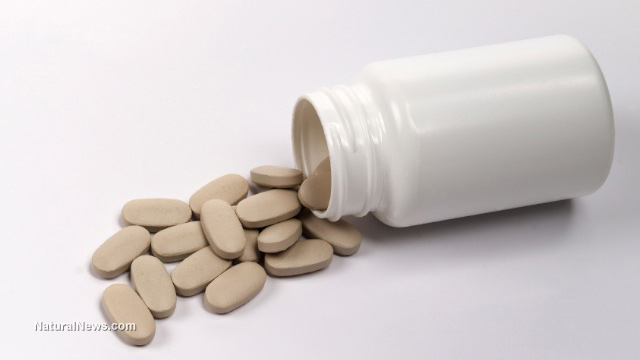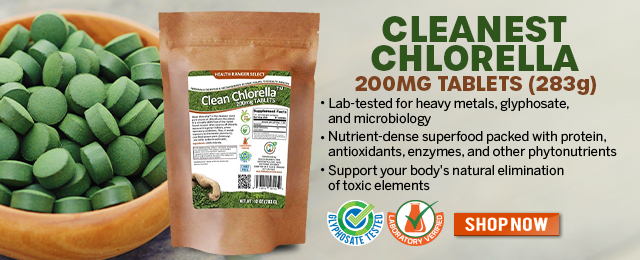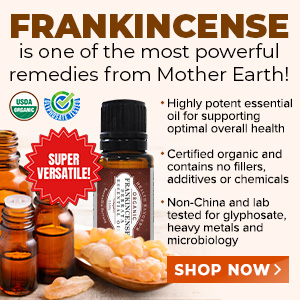Your tax dollars at work: Govt. buys hundreds of billions worth of overpriced drugs each year
Tuesday, July 01, 2014 by: J. D. Heyes
Tags: tax dollars, medication drugs, government programs

(NaturalNews) Scores of Americans are discovering that natural, alternative treatments for many of their most common ailments is preferable to ingesting gene-altering medications, but through taxes they are nonetheless helping to fund hundreds of billions of dollars in government medication spending each year, through a variety of federal healthcare programs.
What's more, the way in which Big Government buys Big Pharma isn't very efficient, thought that likely doesn't surprise you.
According to Bloomberg BusinessWeek, purchases of drugs by the Defense Department, Medicare, Medicaid and other federal benefits programs amount to more than one-quarter of all U.S. retail prescription drug spending, a figure that reached $263 billion in 2013 (download the report as a PDF here):
You might think that kind of buying power would entitle Uncle Sam to get the best price all the time. If only that were true. The government pays vastly different prices for medicines depending on which office is buying them, according to a new report (PDF) from the Government Accountability Office.
Not all payment plans are equal
Medicaid -- a healthcare program aimed at providing coverage to the poor in a federal-state partnership -- is able to get the best deal, the reports have noted. Medicare Part D, which covers elderly Americans through partnerships with private insurance, pays the most for brand-name drugs. Also, the Department of Defense pays the most for generics, according to the GAO's analysis of what the government was paying for 78 common drugs in 2010.
BusinessWeek reported that there are a number of reasons why these examples occur, but no good reasons for them. By federal statute, the Pentagon and Medicaid are able to reap some discounts and rebates from drug makers that result in lower costs. The GAO examined the net cost per dose that each program was paying; prices discovered are what the U.S. pays after rebates and after beneficiaries contribute their share (see the chart here). For Medicaid, drug manufacturers' rebates cut the price of drugs by more than half.
It's a bit of a shell game. Discounts in one program are often offset by higher prices somewhere else -- for either the government or private insurers or both. However, the online financial news magazine reports:
The GAO makes this clear. Theoretically, the government could save billions if it got the Medicaid rate for all the pharmaceuticals it buys--69 percent lower than Medicare gets for brand-name medicines--if drugmakers didn't raise other prices to make up for the lost revenue.
'It's anyone's guess if taxpayers are getting their money's worth'
"The magnitude of these potential offsetting price increases could depend on a number of factors," the GAO wrote. "For example, if a large federal program with many beneficiaries became eligible for the discounts, manufacturers might choose to raise prices by a greater amount than they would if a smaller program with fewer beneficiaries became eligible. Manufacturers might choose to raise prices more for drugs with fewer competitors than for drugs with many competitors. Furthermore, because federal prices are generally based on prices paid by nonfederal purchasers such as private health insurers, manufacturers would have to raise prices to those purchasers in order to raise the federal prices."
The questionable pricing can be found throughout the American healthcare system, BusinessWeek noted. The reason for that is unequal levels of pay; the government, via Medicare, pays doctors and hospitals less than commercial insurance plans, even less via Medicaid. So what happens is that people who buy private health insurance are essentially subsidizing the lower cost coverage for people on Medicare and Medicaid.
Healthcare companies tend to manage their "payer mix" to ensure that they have enough revenue coming in from private plans to cover patients whose coverage does not pay so well.
"All this adds another layer of complexity and confusion to the pharmaceuticals marketplace," reports BusinessWeek. "Medicare's drug plan, Part D, covered 33 million Americans in 2011. State Medicaid programs insured 71.5 million low-income people, and the military covered 9.7 million. Together the programs spent $71 billion on retail prescriptions. It's anyone's guess if taxpayers got their money's worth."
Sources:
http://www.businessweek.com
http://www.cms.gov [PDF]
http://www.gao.gov [PDF]
Tax dollars at FETCH.news
Get independent news alerts on natural cures, food lab tests, cannabis medicine, science, robotics, drones, privacy and more.
Take Action: Support Natural News by linking to this article from your website
Permalink to this article:
Embed article link: (copy HTML code below):
Reprinting this article:
Non-commercial use OK, cite NaturalNews.com with clickable link.
Follow Natural News on Facebook, Twitter, Google Plus, and Pinterest
- Newly released JFK files reveal Pentagon's role in creating Lyme disease and covid in the same lab
- Kiss Your Genetic Privacy Good-Bye! 23andMe Gets Green Light to Sell Your Intimate Genetic Details to Anyone They Want
- Sugar-free deception: Artificial sweeteners hijack hunger signals, fuel obesity epidemic, study warns
- Discovery of vast underground city beneath Giza pyramids challenges human history
- Black cumin seed oil emerges as a powerful ally against breast cancer and chronic inflammation
- Dr. Suzanne Humphries makes bombshell appearance on Joe Rogan podcast, exposing vaccine industry deception back to POLIOMYELITIS
- Sweden's migrant crisis deepens as failed green energy venture leaves thousands jobless, exposes systemic collapse
- Analysis: The coming economic collapse, a mass uprising and Trump's three secret weapons to halt the growing revolt
- Is the vaccine-autism debate reopening? Washington Post sparks controversy with preemptive hit piece on David Geier
- A handful of pecans a day could keep heart disease at bay, study finds
- Challenging the status quo: “America Fooled” by Timothy Scott exposes the myths about antidepressants
- RFK Jr. slashes HHS bureaucracy, saves taxpayers $1.8B while refocusing on chronic disease epidemic
- AI breakthrough slashes celiac disease diagnosis time from months to minutes
- Woman contracts WORLD'S DEADLIEST VIRUS after unknowingly being given the WRONG VACCINE
- Pediatric dentist exposes fluoride dangers as more states ban toxic water additive
- Aluminum pollution: A silent threat to human health
- Cauliflower: From ancient crop to modern superfood
- Catastrophic 7.7 earthquake devastates Myanmar and Thailand; death toll could reach 100,000
- Newly released JFK files reveal Pentagon's role in creating Lyme disease and covid in the same lab
- Analysis: The coming economic collapse, a mass uprising and Trump's three secret weapons to halt the growing revolt
- Trump nominates VACCINE ZEALOT Susan Monarez to lead the CDC, sidelining RFK Jr.'s reform efforts
- Trump's greatest betrayal so far: Accelerating Middle East wars, silencing dissent, and serving Zionist masters
- Dr. Mike Yeadon releases 15-minute testimony - WATCH - about genocidal intent of COVID “vaccines”
- Festive flavors: The sweet history, nutritional profile and health benefits of pecan pie
- Elon Musk: Aliens could be here on Earth RIGHT NOW
- Big Pharma's $8 Billion bribery scheme exposed: how doctors are pushed to prescribe junk science, not heal
- 5 Simple steps to boost your brainpower: How to strengthen executive function in a distracted world
- Trump reverses course on Gaza plan, says “nobody is expelling Palestinians”
- A lack of integrity in Academia: Harvard professor found GUILTY of fraudulent research to promote CRT theory
- Reclaim your health: How midlife exercise reverses years of inactivity
- Survival 101: Effective EMF blocking techniques
- Florida takes a stand: DeSantis proposes permanent ban on mRNA vaccine mandates
- Sugarcane extract superior to cholesterol-lowering drugs?
- California's social media censorship law struck down: A victory for free speech or a threat to online safety?
- OpenAI whistleblower who dissented against how the company trained ChatGPT found dead
- EPA advisor admits the agency is funneling billions to climate groups ahead of Trump’s return to White House
- EPA advisor admits the agency is funneling billions to climate groups ahead of Trump’s return to White House
- Newly released JFK files reveal Pentagon's role in creating Lyme disease and covid in the same lab
- California's social media censorship law struck down: A victory for free speech or a threat to online safety?
- Dr. Mike Yeadon releases 15-minute testimony - WATCH - about genocidal intent of COVID “vaccines”
- The Health Ranger releases “Vaccine Zombie” song and music video, using AI-animated zombies for the music video
- The pandemic as a tool for INDOCTRINATION: Understanding “The Indoctrinated Brain” by Dr. Michael Nehls
- Florida takes a stand: DeSantis proposes permanent ban on mRNA vaccine mandates
- “Why we influenced the 2020 elections”: Facebook files reveal the coordinated effort to bury the Hunter Biden laptop story
- Mike Adams releases country western hit single: Goin’ Back in Time is Comin’ Home
- Mike Adams releases music poetry sensation: A Child of God
- Unpacking the Lies That We’ve Been Fed – new song and music video released by Mike Adams, the Health Ranger
- Michigan sheriff announces criminal investigation into 2020 election crimes, Dominion Voting Systems
- Migrants are taking advantage of recent hurricanes to scam residents and loot their homes
- House Intelligence Committee calls for the ARREST and PROSECUTION of Dr. Anthony Fauci
- RFK Jr. clears key hurdle: Sen. Susan Collins backs controversial HHS nominee, signaling a new era for health policy
- Rep. Nancy Mace introduces bill to ban biological males from female facilities on federal property
- Peter Rost exposes Big Pharma corruption in his book “The Whistleblower: Confessions of a Healthcare Hitman”
- Mike Adams releases new song and music video: Nothing More Disgusting Than a Globalist
- Red Cross issues warning to stop blood plasma donations from vaccinated people
- Scientists confirm: GENIUS brain function can be spontaneously unleashed in humans without any apparent cause
- EPA advisor admits the agency is funneling billions to climate groups ahead of Trump’s return to White House
- HYSSOP: What research reveals about the health benefits of this ancient holy herb
- Two containers with completed ballots fall out of truck in Florida
- Fully vaccinated about to see “tsunami” of illness and death, warns virologist
- Global leaders unite to clamp down on “misinformation” with UN-backed Cascais Declaration
- BREAKING: 2025 NDAA authorizes mandatory military draft of WOMEN across America… as Pentagon pursues global NUCLEAR war with both Russia and China at the same time
- Michael Yon warns of a ZIONIST TAKEOVER in Trump’s second administration
- BOMBSHELL: DNA testing kits are a SCAM to develop ethnic-specific bioweapons
- Ozempic and Wegovy weight loss drugs are injectable LIZARD VENOM PEPTIDES that may unleash a devastating wave of organ failure… side effects align with symptoms of SNAKE BITES
- Israeli soldiers accused of even more torture and abuse in the West Bank
- These 13 countries just signed an agreement to engineer a global FAMINE by destroying food supply
- NASA admits that climate change occurs because of changes in Earth’s solar orbit, and NOT because of SUVs and fossil fuels
- RFK Jr. clears key hurdle: Sen. Susan Collins backs controversial HHS nominee, signaling a new era for health policy
- Sermon 30: How Jesus reveals Caesar’s FAKE CURRENCY and FALSE AUTHORITY
- Coriander seeds: Ancient medicine backed by modern science
- Arizona officials claim Maricopa County needs 10-13 days to tabulate results of the election
Science News & Studies
Medicine News and Information
Food News & Studies
Health News & Studies
Herbs News & Information
Pollution News & Studies
Cancer News & Studies
Climate News & Studies
Survival News & Information
Gear News & Information
News covering technology, stocks, hackers, and more



"Big Tech and mainstream media are constantly trying to silence the independent voices that dare to bring you the truth about toxic food ingredients, dangerous medications and the failed, fraudulent science of the profit-driven medical establishment.
Email is one of the best ways to make sure you stay informed, without the censorship of the tech giants (Google, Apple, Facebook, Twitter, YouTube, etc.). Stay informed and you'll even likely learn information that may help save your own life."
–The Health Ranger, Mike Adams












































